We take a look at one of the world's most impressive Mazda collections
Andrew Evans heads to Germany to take a tour of Automobil Museum Frey, which houses a collection of rare Mazdas from all over the world
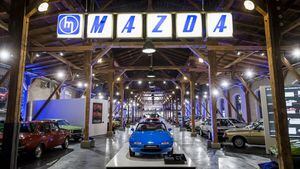
It’s usually premium brands that attract the most fervent fanbases, but one lifelong family of car addicts has set up its own museum in Germany for a very unusual collection indeed.
Walter Frey has been collecting Mazda cars since 1980, when he bought a Mazda Cosmo Sport – a rotary-engined sports coupe – while in the USA. Along with his equally obsessed sons Joachim and Markus, the family also became one of the very first Mazda dealers in Germany – still operating three dealerships – and the trio has amassed an extraordinary collection of not only some of the rarest Mazdas, but some of the rarest cars ever sold.
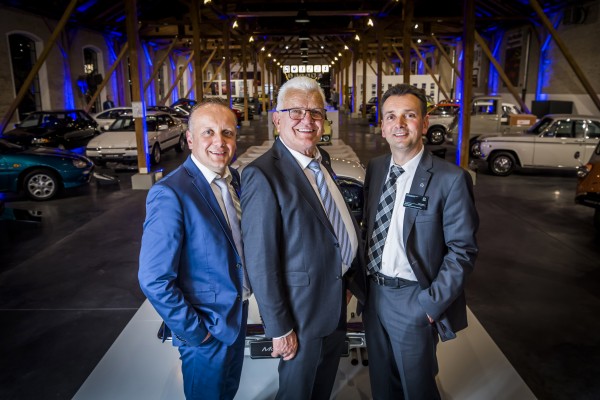
Frey Senior was drawn to the Mazda brand by his own passion for engineering. After the the NSU brand was wound up by Volkswagen, Mazda was the only carmaker left producing rotary-engined cars and Frey’s love of engineering was a natural fit with Mazda’s unique selling point.
Over the intervening decades, the Frey family collected rare Mazda models from the USA, Australia and Japan, to build up an even larger collection of road vehicles than that owned by the parent company in Hiroshima. Many of the cars have personal meaning to the Freys too, including an RX-5 that Walter bought in the UK, drove around on a family holiday and then took home to Germany. The collection even includes a Mazda RX-7 once donated by Mazda to Felix Wankel, the inventor of the rotary engine that has become synonymous with the brand, even though Wankel himself had no driving licence!
With such a large stable of cars – over 120 – it seemed natural to turn the family obsession into a collection available to the public. The Frey family spent years looking for the right place to exhibit the cars and eventually found, with the help of city officials in Augsburg, Germany, a disused tram depot.
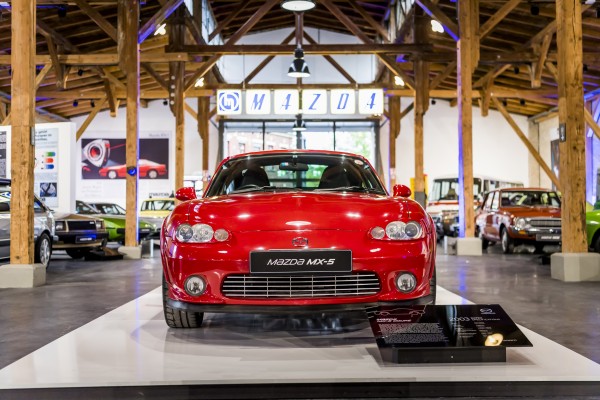
The depot included a shed that was built in 1897 and was used to house and service the trams from the original local light rail network. Indeed, the building still had trams in it at the time. The equivalent of a listed building, the Freys had to spend months sensitively renovating the facility, including replacing the entire roof which was in danger of collapse.
With support and sponsorship from Mazda Germany, the tram depot has now been transformed into a museum and events location. Only around 45 cars from the collection can be housed in the museum, and those that are in a good enough condition to be exhibited will be shuffled so that no two visits to Automobil Museum Frey will be the same.
Mazda Motor Corporation’s executive vice-president, Akira Marumoto, said: “Uniquely impressive, the first Mazda museum outside Japan represents a dream come true for the Frey family to share with the public its one-of-a-kind collection of vintage Mazdas from around the world.
“Everyone at Mazda headquarters is very proud that the Freys are a part of our organisation and have created something so extraordinary.”
With so many varied and fascinating cars from across the company’s rather unusual history, it’s difficult to pick out highlights from the collection, but our five favourites are below.
Mazda Cosmo Sport 110S
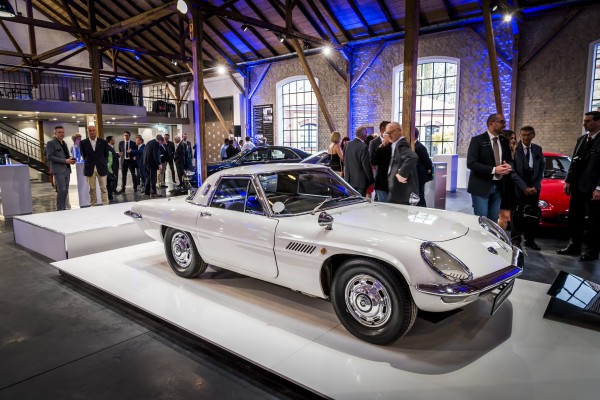
Perhaps the centrepiece of the collection, the Cosmo Sport was Mazda’s very first rotary-engined car. Not only that, it was the first production road car ever to use a twin rotor rotary engine. Every Cosmo Sport was hand built and just over 1,000 were made between 1965 and 1972. The car you see here is even more rare – one of just 343 ‘Series I’, or ‘L10A’ (named for its 10A rotary engine) – models.
Mazda Luce R130
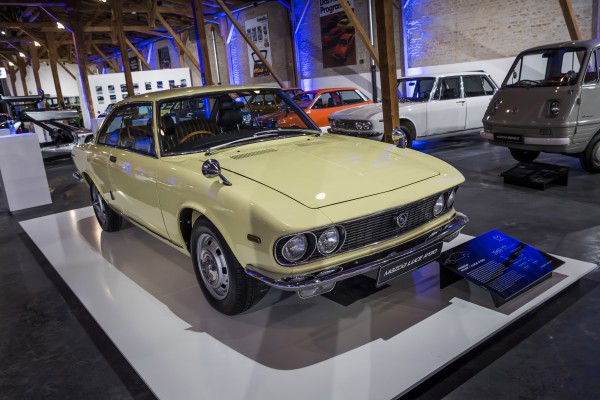
This incredible-looking coupe wouldn’t look out of place with a Lancia or Fiat badge on the nose, and with good reason – it was actually designed by revered Italian design studio Carrozzeria Bertone. The Luce, like many other cars in the Frey collection, is powered by a rotary engine but is front-wheel drive, making it the only production, front-driven rotary in the world.
Mazda Xedos 9
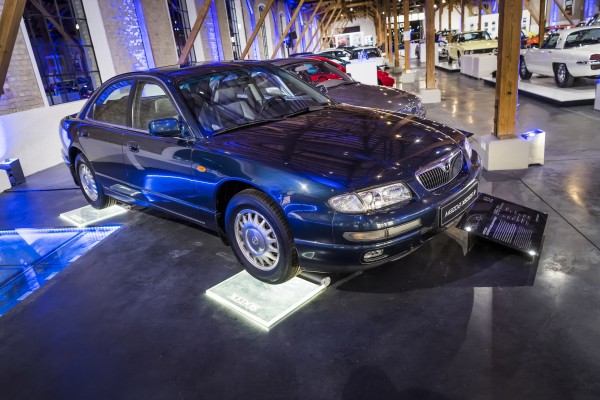
A business saloon aimed at tackling the BMW 5 Series and Audi A6, the Xedos 9 also features some of Mazda’s unusual engine technology. The first ever ‘Miller Cycle’ production car, the engine in the Xedos 9 uses an odd cam profile that leaves the intake valves open well into the compression phase of the cycle, adding a supercharger to keep the fuel-air mix in the chamber. The result is a dramatic increase in fuel economy, but the incredibly complex engine was expensive to make and maintain.
Mazda/Autozam AZ-1
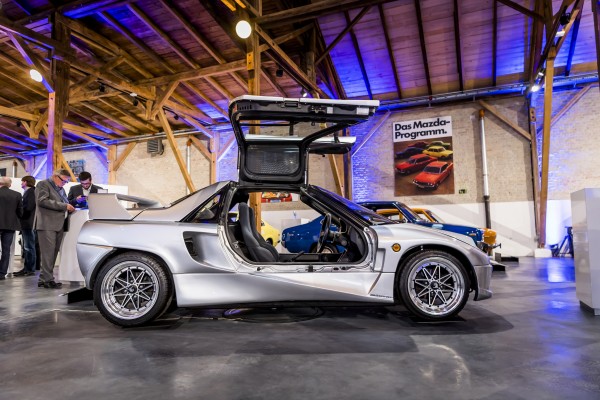
Unlike other manufacturers who made tiny, frugal cars to fit in with Japan’s incredible restrictive ‘Kei’ car regulations, Mazda built a sports car. With a 660cc turbocharged petrol engine mounted behind the driver and gullwing doors, the AZ-1 is a typically creative approach to the rules. The car was sold in Japan only, through the company’s Autozam compact car sub-brand which, inexplicably, also sold some Lancia models.
Mazda MX-5/Roadster Coupe
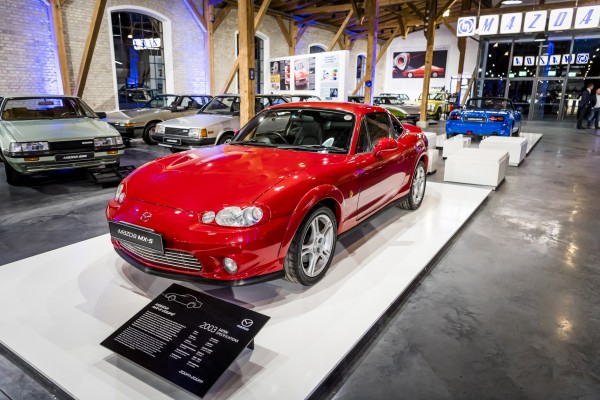
You might think that a hard-topped MX-5 is a very recent invention – with the folding metal roof versions of the third and fourth generation car, but Mazda actually made a proper fixed roof coupe back in 2003 – and it featured on the second generation MX-5. Sold only in Japan – where the MX-5 was known as the Mazda Roadster at the time – the Coupe used a convertible shell modified before the production line. It added just 10kg to the car’s overall weight.





